revanlive
Greenie
- Joined
- Oct 21, 2018
- Messages
- 15
- Reaction score
- 29
- Golden Thread
- 0
- Primary Interest:
- All Treasure Hunting
Hi guys !
New here and fresh to the gold prospecting as well !
If you want to go straight to the point skip to number 4.
1- To tell you the background, I'm in Ireland and prospect some streams around since may.
I've been around 20 times out and have found gold i think 18 times so I'm really hooked !
Nothing crazy really, i'll attach a picture or two of what i have so far, knowing that I find in average 5/7 pieces per trip but increasing !
The gold is beautiful, coarse but small. Nothing like flat flakes here. I found some pieces that are like a frozen shrapnel explosion still holding some black sand, very cool specimens but tiny !
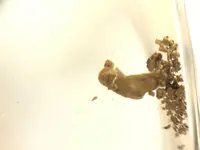
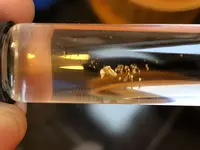
2- Anyway, at the moment I'm using a gold rush nugget bucket,and even though I love it, it's very slow to use. I usually process around 4-6 bucket in 4h or so (15L buckets).
I was planning on getting a grizzly gold trap but they closed down, and croc gold have problems with their shop for the last 6 months, and all are super expensive even without the shipping to Ireland.
3- So I thought I could make a sluice myself like many people !
Over the last 2 days I've done a bit of research and drawing and this afternoon I decided to model my plans in 3D (wich I had never done before but turns out it's very easy with tinkercad, and it's free).
4-I decided to make a small size fluid bed which would be perfect to reachfar areas and trap the very fine gold here. 45cm long, with a trap of 13.5x13.5 with the entry height at 5cm and the exit 6cm.
sorry for the imperial system user
MASSIVE thanks to Goodyguy and Goldwasher for their super answers on previous posts that helped me so much. All my dimensions fit their recommendations.
But with all the research I have 2 last questions :
- I've seen some have a "flow deflector plate" attached to the roof of the trap after the grizzlies, in order to disrupt the flow and break the surface tension to avoid floating fine gold to skid right through the sluice. Can you point me in the right direction as of how long the plate should be and where in relation to the trap ?
Should it be right after the dip in the trap and go as far as the height of this one ? i'm afraid that it'd clog the system. Check out the picture as it is right now.
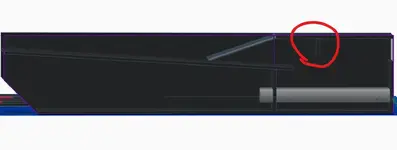
- The grizzlies at the moment would be 2mm thick with a spacing of 10mm (almost 3/8th of an inch I think). Does this look too small for you ?
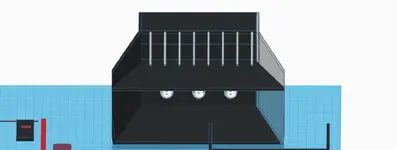
-Oh and an extra question : for such a small sluice, I plan 3 tubes with 18 holes each. One bottom hole every 2cm and 2 holes at 5 and 8 o'clock every 2cm as well,alternated in relation to the bottom one.
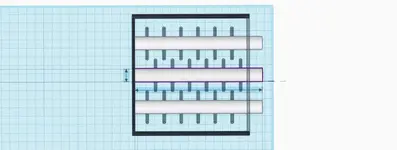
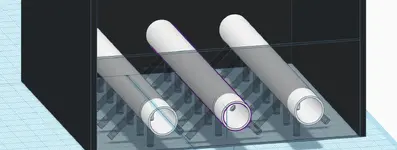
(Goodyguy posted that pattern befor, credits to him).
If you are interested don't hesitate to ask anything about the design.
I have a few tweeks to do before calling it finale but when it's done I can drop the final designs and dimensions. I'm trying to keep it under 100€ and I should reach the target
Thanks for the read and the help
New here and fresh to the gold prospecting as well !
If you want to go straight to the point skip to number 4.
1- To tell you the background, I'm in Ireland and prospect some streams around since may.
I've been around 20 times out and have found gold i think 18 times so I'm really hooked !
Nothing crazy really, i'll attach a picture or two of what i have so far, knowing that I find in average 5/7 pieces per trip but increasing !
The gold is beautiful, coarse but small. Nothing like flat flakes here. I found some pieces that are like a frozen shrapnel explosion still holding some black sand, very cool specimens but tiny !


2- Anyway, at the moment I'm using a gold rush nugget bucket,and even though I love it, it's very slow to use. I usually process around 4-6 bucket in 4h or so (15L buckets).
I was planning on getting a grizzly gold trap but they closed down, and croc gold have problems with their shop for the last 6 months, and all are super expensive even without the shipping to Ireland.
3- So I thought I could make a sluice myself like many people !
Over the last 2 days I've done a bit of research and drawing and this afternoon I decided to model my plans in 3D (wich I had never done before but turns out it's very easy with tinkercad, and it's free).
4-I decided to make a small size fluid bed which would be perfect to reachfar areas and trap the very fine gold here. 45cm long, with a trap of 13.5x13.5 with the entry height at 5cm and the exit 6cm.
sorry for the imperial system user

MASSIVE thanks to Goodyguy and Goldwasher for their super answers on previous posts that helped me so much. All my dimensions fit their recommendations.
But with all the research I have 2 last questions :
- I've seen some have a "flow deflector plate" attached to the roof of the trap after the grizzlies, in order to disrupt the flow and break the surface tension to avoid floating fine gold to skid right through the sluice. Can you point me in the right direction as of how long the plate should be and where in relation to the trap ?
Should it be right after the dip in the trap and go as far as the height of this one ? i'm afraid that it'd clog the system. Check out the picture as it is right now.

- The grizzlies at the moment would be 2mm thick with a spacing of 10mm (almost 3/8th of an inch I think). Does this look too small for you ?

-Oh and an extra question : for such a small sluice, I plan 3 tubes with 18 holes each. One bottom hole every 2cm and 2 holes at 5 and 8 o'clock every 2cm as well,alternated in relation to the bottom one.


(Goodyguy posted that pattern befor, credits to him).
If you are interested don't hesitate to ask anything about the design.
I have a few tweeks to do before calling it finale but when it's done I can drop the final designs and dimensions. I'm trying to keep it under 100€ and I should reach the target

Thanks for the read and the help

Upvote
0





